SIL Obtains Record $11.75 Million Dollar Civil Rights Settlement Against Maricopa County and Sheriff Penzone
SIL Obtains Record $11.75 Million Dollar Civil Rights Settlement Against Maricopa County and Sheriff Penzone
Scottsdale Injury Lawyers has finalized an $11.75 million dollar settlement with Maricopa County Sheriff Paul Penzone and Maricopa County. The settlement was reached earlier this year and received final approval from the County Board of Supervisors on May 18, 2022. This month settlement funds were disbursed to the client and his mother.
A Summary of the Civil Rights Lawsuit Against Maricopa County and Sheriff Penzone
The civil rights lawsuit arose from the near-deadly attack of Brian Ortiz (“the client”)by another inmate in the Maricopa County jail system. On May 26, 2020, under what was supposed to be the watchful eye of detention personnel, the client was punched, kicked and stomped by another inmate almost 50 times. He was beaten with such violent force that he fell into a coma and did not regain consciousness for more than two months. During this time, he required a ventilator to breathe and intravenous nutrition through feeding tubes.
The client suffered a traumatic brain injury. Specifically, a diffuse axonal shear injury at the corpus callosum. The client will never be the same, much less a full-functioning adult. During the assault and in the critical time period following the client’s traumatic brain injury, no one came to his aid. In fact, the client was not so much as placed in an ambulance until approximately 2 hours and 15 minutes after he was lying unconscious on the ground, seizing and bleeding from his head.
The Claims Advanced In The Civil Rights Lawsuit and the Parties Sued
The shocking series of events described above was the result of the deliberate indifference to the safety and serious medical needs of the client by Maricopa County, its Sheriff Paul Penzone, and the jail’s detention officers and medical staff. The client was declared incompetent due to the injuries suffered in the subject-attack. As a result, his mother and guardian, brought a civil rights lawsuit on both his behalf and for herself. The client’s mother hired Scottsdale Injury Lawyers to handle this complicated and serious civil rights case.
The client’s mother hired Scottsdale Injury Lawyers to handle this complicated and serious civil rights case.
Scottsdale Injury Lawyers filed a lawsuit on September 8, 2020. The lawsuit was filed in the United States District Court of Arizona. It was assigned case # 2:20-CV-01746-SPL-DMF. Steven P. Logan was the presiding judge and Deborah M. Fine was the magistrate judge assigned.
The case was entitled. Selene Ortiz as guardian of Brian Ortiz and incompetent person, Et Al. v. Maricopa County, Et Al. The lawsuit named fourteen defendants. The defendants include Maricopa County, its Sheriff Paul Penzone, deputies working under Penzone and medical staff working for the County.
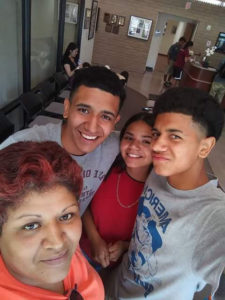
Scottsdale Injury Lawyers advanced very complicated claims under 42 USC Section 1983. This included claims for deliberate indifference to medical needs and failure to protect. Our civil rights lawyers also brought claims against Sheriff Penzone, in both his supervisory and individual capacity, for failure to supervise and train.
Monell Claims were also filed against Sheriff Penzone on the basis that he was a final policy maker and failed to train. Since the client was an inmate at the time of the assault the Eighth Amendment applied, not the Fourteenth Amendment. There is a heightened standard for proving claims under the Eighth Amendment. This requires a showing of something more than mere negligence, but lower than intentional conduct. Eighth Amendment claims are very hard to prove and made the civil rights case especially difficult and challenging.
How The Client Ended Up At Maricopa County Jail
On May 26, 2020, the client was 18-years-old and found himself housed in the Maricopa County 4th Avenue Jail. The jails in Maricopa County are controlled and run by the Maricopa County Sheriff’s Office and its Sheriff Paul Penzone. Medical personnel and medical treatment at the jails are provided by Correctional Health Services. Correctional Health Services is an administrative subdivision of Maricopa County. As such, CHS personnel are employees of the County. On the other hand, the sheriff deputies who serve as the jail guards are employees of Maricopa County Sheriff’s Office.
The client was in the jail because he was picked up on a probation violation. He was on probation due to an incident that occurred during 2019 when he was in juvenile hall. The client was in juvenile hall when he was 16-years-old. While there, on January 3, 2019, he was in a fight with another minor. A youth correctional officer attempted to break up the fight and in doing so was struck by both minors. As a result, the client was charged with aggravated assault against a correctional officer-a serious felony.
This was despite the fact that the client did not intend to strike the youth correctional officer. The youth correctional officer also provided a statement that he was struck by both of the minors and that he did not believe those strikes were intentional. Nevertheless, the client was charged with aggravated assault on a correctional officer. He was then appointed a public defender to represent him.

The public defender advised the client to take a plea deal which involved him pleading guilty to aggravated assault as a class 6 felony in exchange for three years of probation with conditions. The plea deal also called for a designation of “Non Dangerous-Non Repetitive.” If the client completed probation successfully, the offense would be designated a misdemeanor.
One of the conditions of probation required the client to pay $89 to the Court. The client subsequently violated this condition of his probation. On May 21, 2020, his probation was revoked for this reason alone and he was ordered to serve the presumptive term of one year. He was then taken to 4th Avenue Jail to serve his sentence.
The Housing Unit the Client Was Assigned To
At 4th Avenue Jail, the client was placed in closed custody housing. This housing unit is for the most violent criminal offenders in the jail system. MCSO policy DI-1 states:
This housing is provided for inmates who require a strictly controlled environment and who, based upon factually documented information, pose a serious threat to life, property, Officer personnel, volunteers, and other inmates, or to the orderly operation of the jail facility….These inmates shall be housed in a maximum security jail facility, and may be denied contact with other inmates, and restricted from programs and services normally offered to general population inmates….and may be locked in their cells for up to 23 hours daily.”
Closed custody inmates are so dangerous that special precautions must be taken at all times by MCSO personnel transporting them. Closed custody inmates must be shackled with leg irons and belly belts with cuffs before departing their housing unit. A minimum of at least two officers must be present at all times when interacting or engaging a closed custody inmate.
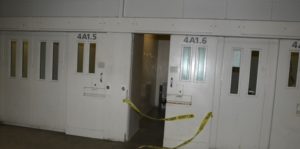
The client was apparently placed in closed custody housing because of his conviction of aggravated assault on a correctional officer. This was without any analysis of the underlying details regarding the crime and the designation of “Non Dangerous-Non Repetitive.” Although, our civil rights lawyers did not believe he belonged in that housing category, a claim was not advanced in the civil rights lawsuit on that basis.
At just 18-years-old, the client found himself housed at 4th Avenue Jail with hardened and dangerous criminals much older than him.
As such, at just 18-years-old, the client found himself housed at 4th Avenue Jail with hardened and dangerous criminals much older than him. These criminals had a history of violent crimes, multiple felony convictions and had served time previously. One of those criminals ended up attacking the client.
The Details of the Violent Attack at 4th Avenue Jail
On May 26, 2020, on the client’s fifth day at 4th Avenue Jail, he was violently assaulted by another inmate who was housed in his unit. At approximately 7:40 a.m., the client and two other inmates were allowed access to the dayroom. The dayroom is an open area where picnic tables are situated and from where an inmate may access the shower area. At that time, the other inmate asked the client to enter his cell and engaged him in conversation.
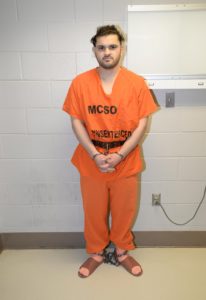
When the client entered the cell, the other inmate delivered closed fist strikes to the client’s groin and face. This knocked the client to the wall and he then fell to the ground. The other inmate then stomped on the client’s head repeatedly before punching him several times in the face. Approximately 16 punches and 32 foots-stomps were doled out during the beating.
At approximately 7:42 a.m., the other inmate exited his cell alone. He then approached another inmate in an adjacent cell and began laughing and appeared to be bragging about what had occurred. That inmate then exited his assigned cell and looked into the attacker’s cell. That inmate joined the attacker in laughing at the client who was still unconscious on the floor of the attacker’s cell.
At approximately 7:43 a.m., the attacker returned to his cell and observed the client still lying on the ground unconscious. At approximately 7:44 a.m., the attacker exited his cell, retrieved cleaning solution and walked back to his cell. Along the way, he was laughing and appeared to be bragging to the other inmates about his attack of the client.
At approximately 7:45 a.m., the attacker entered his assigned cell. He then used his foot to kick the client, who remained unconscious on the floor of the cell. The attacker then exited his cell and again spoke with the inmate in the adjacent cell. At approximately 7:49 a.m., the attacker entered his assigned cell and attempted to lift the client and get him to stand under his own power. However, the client was still unresponsive and unable to stand. The attacker then laid him back down on the cell floor.
At approximately 7:50 a.m., the client was seizing. In an effort to revive him, the attacker started smacking him in the face repeatedly with a sandal. At approximately 7:52 a.m., more than ten minutes after the initial attack, the attacker drug the client to the client’s assigned cell and placed him on his mattress.
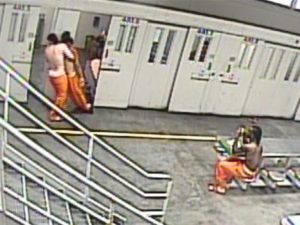
At approximately 7:57 a.m., the attacker began cleaning up the evidence of the attack. He poured cleaning solution from the back of his assigned cell toward the doorway. He also used a towel to clean the client’s blood from the cell. He then went to the shower and rinsed the towel.
Jail Guards Did Not Intervene in the Attack Despite Having Camera Surveillance
All of this was visible and captured on the surveillance cameras at the jail. Nearly every inch of 4th Avenue Jail is covered by surveillance cameras. The cameras are supposed to be monitored by custodial staff in a control tower. From the control tower, a guard can observe what is happening, alert other officers to emergency situations and sound alarms as needed.
MCSO policy DH-6 requires 24-hour supervision of all inmates at each jail facility, and states that supervision is the responsibility of detention personnel. The control officers are responsible for monitoring all activity in their assigned units or pods including the actions of inmates. They are further supposed to notify other personnel of any unusual activities occurring that require assistance such as inmate fights, disturbances or medical emergencies. The control officers further control entry and exit from inmate cells.
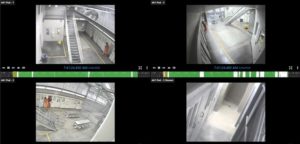
MCSO corrections personnel are responsible for ensuring the care, custody and control of all inmates under their watch. This includes monitoring all inmate behavior within their assigned housing unit including in the dayrooms. MCSO corrections personnel are also tasked with timely responding to inmate fights, medical emergencies and any other disturbances within their assigned housing unit.
However, no guards or MCSO staff intervened in the attack of the client or came to his aid after. It was either allowed to happen or MCSO staff recklessly disregarded their responsibility to monitor the inmates and to protect the client. In sum, the client laid on the floor of his attacker’s cell for over ten minutes seizing while his attacker celebrated around the dayroom and repeatedly tried to revive him before dragging him through the unit back to his own cell.
The client laid on the floor of his attacker’s cell for over ten minutes seizing while his attacker celebrated around the dayroom and repeatedly tried to revive him before dragging him through the unit back to his own cell.
MCSO Staff Failed to Find the Client and Provide Timely Medical Care After the Attack
Three security walks were subsequently performed by jail guards through the unit where the client was housed. These security walks were at approximately 8:00, 8:25 and 8:50 AM. During these security walks, they glanced into the client’s cell. The client was seizing continuously during this time period. However, the jail guards either recklessly did not notice his condition or intentionally disregarded it.
Eventually, at about 9:15 a.m., medical staff, were conducting medical rounds in the unit. During their rounds, they stopped at the client’s cell for a potential blood pressure assessment. When they did so, they looked into the cell and saw that the client was non-responsive and was seizing.
Upon viewing the client, these individuals did not promptly administer medical care, nor did they request an ambulance. One of them radioed in a “man down” to security control and requested additional officers and staff. At approximately 9:17 a.m., multiple guards arrived at the client’s cell.
Once at the cell, the guards and medical staff saw that the client was non-responsive, that his head was swollen, that he was seizing and that he had blood coming out of his ear. However, none of them promptly administered emergency medical care, called for emergency medical personnel or requested an ambulance.
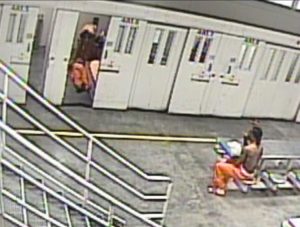
Before entering the cell, jail guards retrieved a shield from a control office. The guards then secured the client with restraints around his hands, a belly belt and leg chains, before placing him on a backboard. During this time the client was unconscious, non-responsive, had swelling to his face and was bleeding from his head. During this process, the guards failed to administer emergency medical care or request an ambulance.
At 9:25 a.m., approximately 1 hour and 45 minutes after he was nearly beaten to death, and ten minutes after staff discovered him seizing in his cell, the client was taken out of his cell on a backboard, placed on a gurney and taken to the jail’s medical clinic. He was then examined by a jail doctor. At 9:55 a.m., half an hour after the client was taken to the jail medical clinic—and 2 hours and 15 minutes after the attack—the client was placed in an ambulance.
The Client Suffered Significant Injuries
As a result of the attack, the client suffered a severe traumatic brain injury and was comatose for more than two months. More specifically, his injuries included a diffuse axonal brain injury, acute respiratory failure, coma, post-traumatic seizures, left hemiplegia, TBI (traumatic brain injury), traumatic subarachnoid hemorrhage with coma, dependence on respirator, diffuse traumatic brain injury with loss of consciousness greater than 24 hours without return to pre-existing conscious level, encephalopathy, hyperosmolality and hypernatremia.
The client’s mother, was never told by the Maricopa County Sheriff’s Office or any of its employees that her son had been attacked and had suffered serious injuries. Instead, on June 1, 2020, she was contacted by someone from the hospital who told her, for the first time, that her son was in critical condition and on life support. On June 3, 2020, medical professionals at the hospital asked the client’s mother for permission to take her son off life support and she refused.
The client made a recovery to where he can now breathe on his own and eat without a feeding tube. However, he is now severely cognitively compromised. He needs help with every activity of daily living. He cannot feed himself. He is incontinent. He cannot walk. He cannot bathe himself. He cannot sit up. He has bilateral contractures of both arms. He has dysarthic (slurred) speech.

The client has ataxia (lack of coordination). He is currently confined to a wheelchair which he needs assistance to get into. In addition to all this, he has behavioral issues attributable to the
brain injury which makes him difficult to care for. He requires skilled nursing on a daily basis and will likely require assistance for the rest of his life.
Our Civil Rights Lawyers Fight for Records During the Lawsuit
Once the lawsuit began, our civil rights lawyers started the discovery process. The discovery stage in a lawsuit is the period of time where each side is able to gather evidence. This includes from one another and third parties. This can include document requests, issuing subpoenas, taking statements of witnesses under oath, requesting admissions, asking and answering written questions, among other things.
Through discovery our civil rights lawyers obtained over 10,000 pages of documents from the County and Sheriff. In those thousands of pages of documents, our attorneys found a single reference to something called “modified closed custody.” It was described as something the custodial staff did at the jail which allowed three closed custody inmates access to the day room and each other at the same time.
The County claimed that the purpose of “modified closed custody” was to see if dangerous inmates could cooperate with each other and eventually be placed in general population. However, our civil rights lawyers believed it was really because the deputies at the Jail wanted to get day room access over with faster. We then focused in on exploiting the practice of “modified closed custody.”
Our Civil Rights Lawyers Crack the Case and Exploit the Practice of Modified Closed Custody
Our civil rights lawyer believed that “modified closed custody” is what allowed Brian to be attacked. “Modified closed custody” allows three closed custody inmates to have access to each other and the dayroom. This contact is unsupervised and there is no floor officer present in the immediate vicinity. We established that “modified closed custody” is an informal practice used by MCSO at 4th Avenue Jail.
We established that “modified closed custody” is an informal practice used by MCSO at 4th Avenue Jail.
This practice contradicts established MCSO policies which set forth that closed custody inmates must be strictly controlled. Traditionally, closed custody inmates were not to have direct contact with one another or other inmates without significant safety precautions and officers present. On the day of the incident, the client was exposed to the attack because MCSO staff allowed both he and his attacker out of their cells under “modified closed custody.”
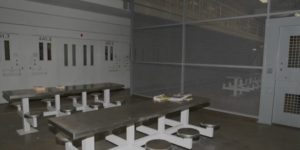
Our civil rights lawyers learned that there are no written policies or procedures addressing modified closed custody. We discovered it did not exist in a single MCSO handbook or writing. MCSO and the County could not produce a single document discussing or describing it. There was no paper trial as to who established it, when it was put into use, who studied it, who approved it, who determined it was safe, etc. During the case, our civil rights lawyers proved it was simply an ad hoc dangerous procedure that MCSO employed at 4th Avenue Jail and perhaps other jails under their control.
Our civil rights lawyers learned that there are no written policies or procedures addressing modified closed custody.
This ultimately became the key to the case. It was impossible for MCSO and Sheriff Penzone to explain this practice and why there were no rules addressing. Jail systems are supposed to be strictly controlled and rule based. There are hundreds of pages of policies and procedures that apply. There are also internal manuals setting forth rules and guidelines for custodial staff to follow.
These rules need to be strictly followed to ensure the safety of inmates and the efficient functioning of the prison. Since our civil rights lawyers established that no such rules existed for modified closed custody, we had the County and Sheriff pinned. Knowing this, the County and Sheriff agreed to participate in mediation where the settlement was agreed to.
Our Civil Rights Lawyers Brought In Top Experts to Maximize the Settlement
Our civil rights lawyers put a tremendous amount of time and research into procuring the best experts to help the client win. We spoke with neurologists, psychiatrists and other doctors. We interviewed multiple jail practices and procedures experts from around the country. We hired a life care planner, vocational expert and economist.
A life care plan for the client was established. A medical costs projection was also prepared detailing the amount of medical expenses the client would have over the course of his life. A report of the client’s future lost wages was also prepared.
A videographer and production company was hired to prepare a compelling day in the life video. A probate attorney was employed to assist in getting the settlement approved by the probate court. A fiduciary was enlisted to oversee and safeguard the settlement funds the client would receive.
The Settlement Was the Largest Ever Paid By Maricopa County and Its Sheriff for a Jail Related Injury
The $11.75 million dollar settlement is the largest ever paid by Maricopa County and its Sheriff to a single individual for a jail related injury. The settlement paid was for both the client and his mother. Per the terms of the settlement, the client received $10.5 million and his mother received $1.25 million.
The client received $10.5 million and his mother received $1.25 million.
The mother’s claim was for the loss of her relationship with her son. Specifically, the loss of her son’s care, love and companionship. Sadly, instead of having her son there to help her in old age, she is now required to be his caretaker.
The settlement was obtained in under two years from the time Scottsdale Injury Lawyers agreed to take the case. This is an incredibly quick amount of time for a lawsuit of this magnitude and complexity. Most importantly, the settlement obtained by our civil rights lawyers will provide the client with the money he needs for his future needs. It also brings closure to his mother and family. It proves that Maricopa County and its Sheriff knew they were at fault for what happened.
The Civil Rights Settlement Garnered National Media Attention and Was Heavily Reported On In the Media
The settlement our civil rights lawyers obtained drew great attention from the media. This includes both national and local reports. This also includes television, web and print coverage.
Some national media outlets that reported on the story included, yahoo.com, US news and World Report, Newsbreak.com, among others. Dozens of local media outlets reported on the story as well. Multiple television news stations ran stories on the settlement.
Scottsdale Injury Lawyers lead attorney, Tony Piccuta, was interviewed for multiple television news stories. This includes both ABC 15 and CBS 5. Piccuta’s interviews and those news stories can be watched by clicking the below links.
https://www.youtube.com/watch?v=nG3XXfNAHjA
https://www.youtube.com/watch?v=XcZnjBBcODw
Contact An Experienced Arizona Civil Rights Lawyer
If you or a loved one has experienced a civil rights violation, contact Scottsdale Injury Lawyers today. Our civil rights lawyers have set record results and achieved six, seven and eight figure results in both state and federal court. A consultation is free and we do not charge anything up front if we decide to take your case. We only earn a fee if we recover for you. An experienced civil rights attorney is available to discuss your case now. Contact us today by email or phone.
About the author: The content on this page was provided by Scottsdale personal injury attorney and Arizona civil rights lawyer Tony Piccuta. Piccuta graduated with honors from Indiana University-Maurer School of Law in Bloomington, Indiana (Ranked Top 35 US News & World Report 2018). Piccuta took and passed the State bars of Arizona, California, Illinois and Nevada (all on the first try). He actively practices throughout Arizona and California. He is a trial attorney that regularly handles serious personal injury cases and civil rights lawsuits. He has obtained six and seven figure verdicts in both state and federal court. He has been recognized by Super Lawyers for six years straight. He is a member of the Arizona Association of Justice, Maricopa County Bar Association, Scottsdale Bar Association, American Association for Justice, National Police Accountability Project and Consumer Attorneys of California, among other organizations.
Disclaimer: The information on this web site is for informational purposes only and does not constitute legal advice. The information on this page is attorney advertising. Reading and relying upon the content on this page does not create an attorney-client relationship. If you are seeking legal advice, you should contact our law firm for a free consultation and to discuss your specific case and issues.

